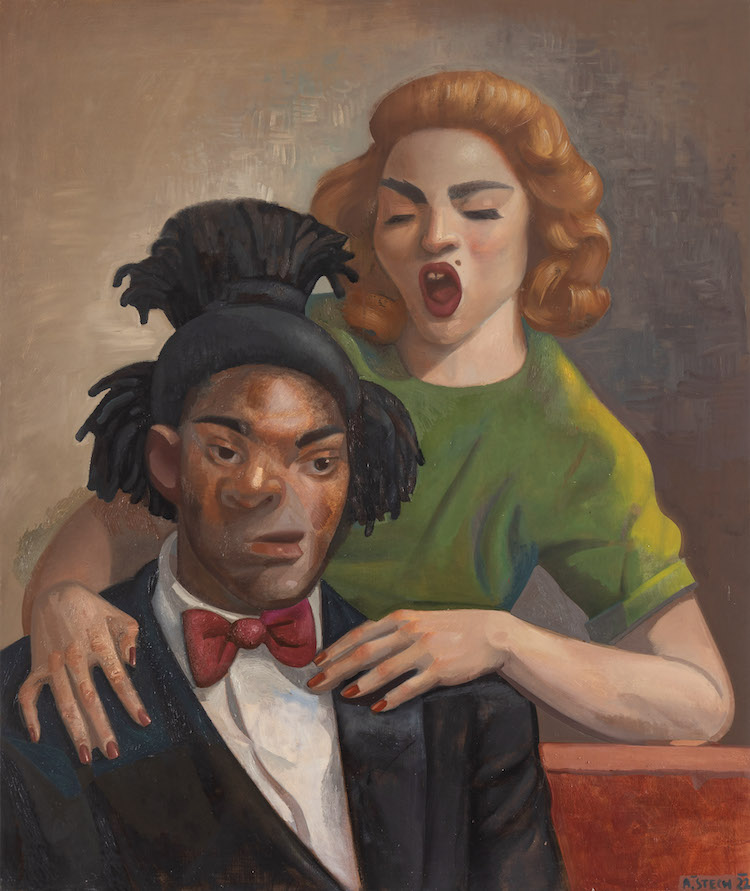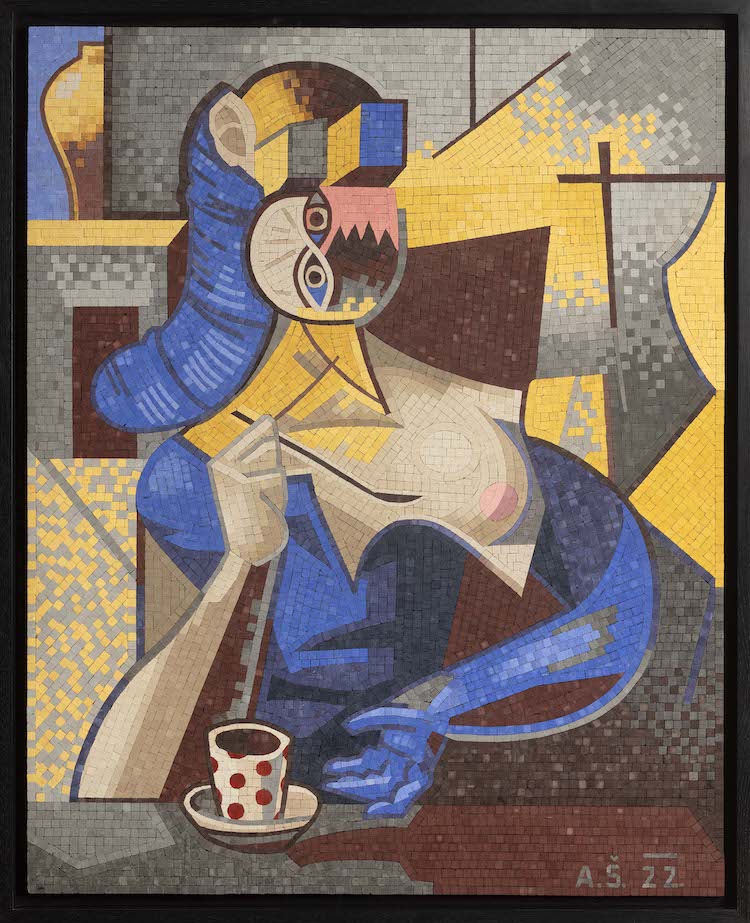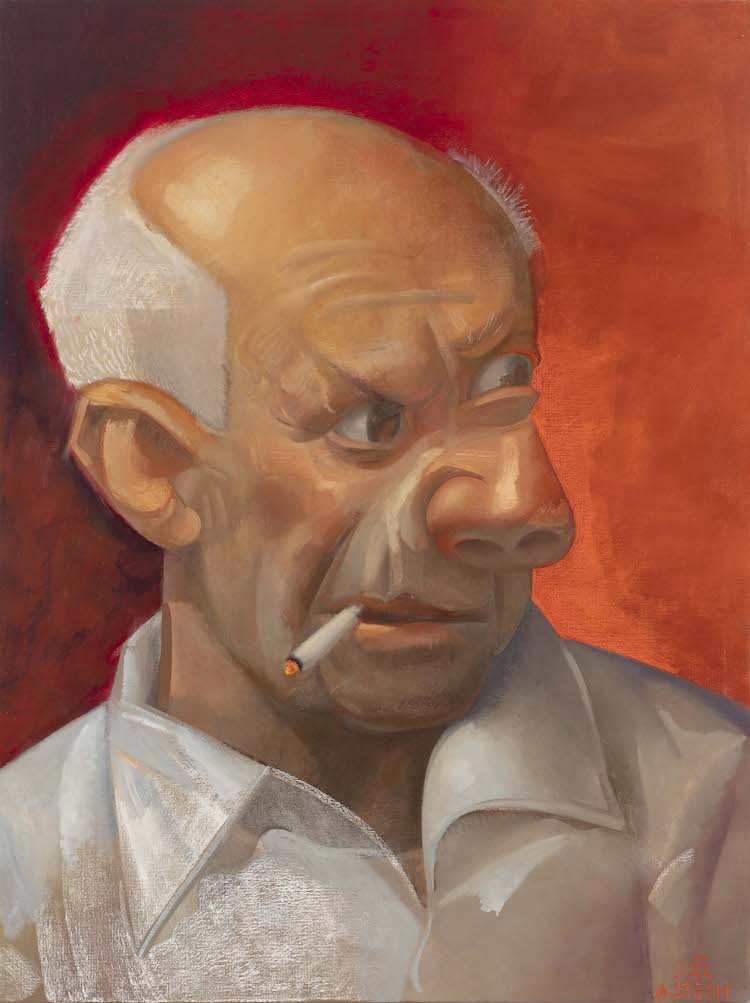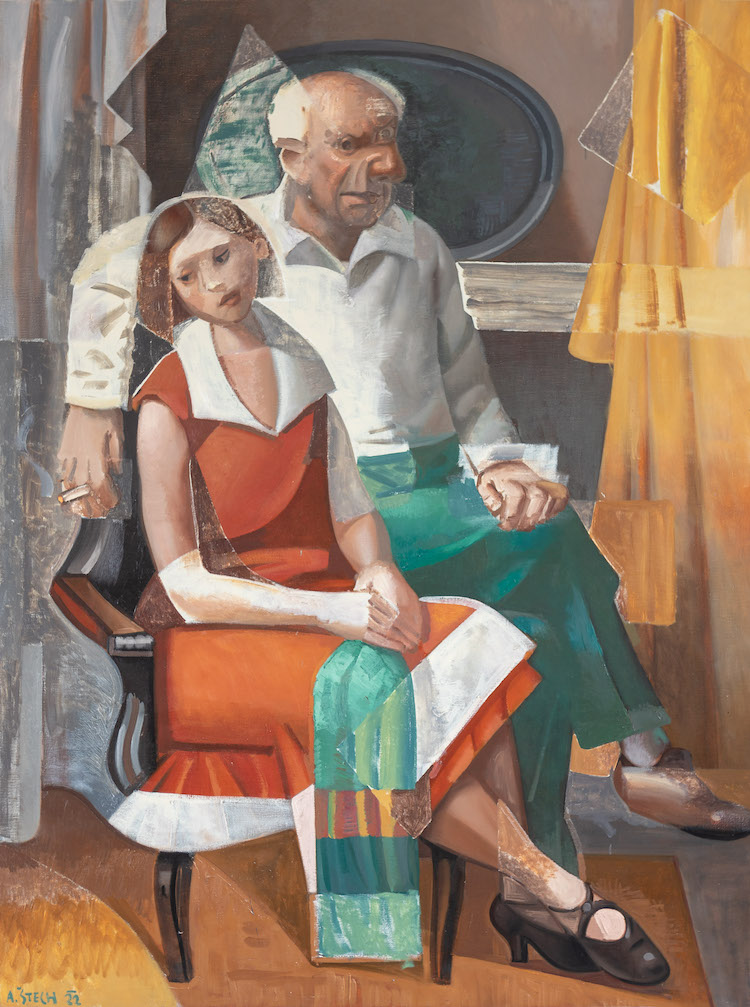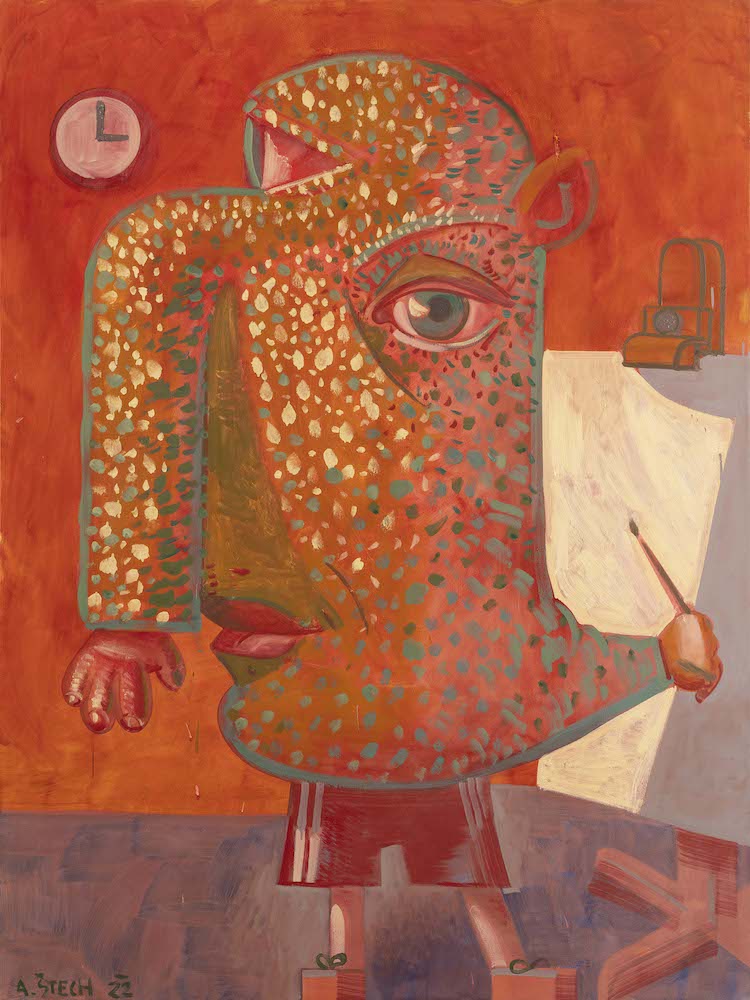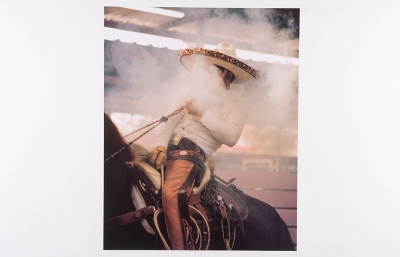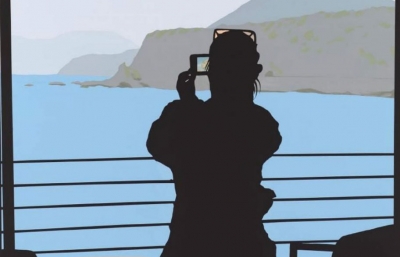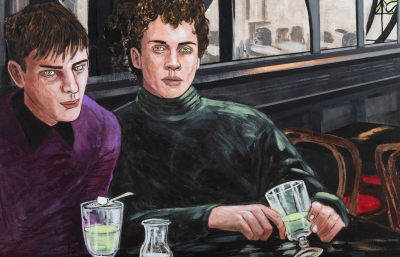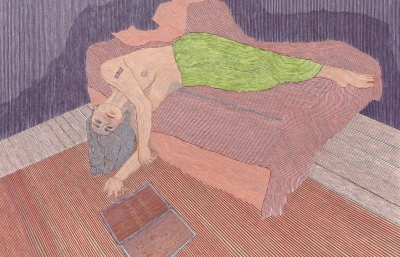For more than a decade, Adam Štech has been on a mission to amplify the canonical art beauty through deconstruction and development of deviant dichotomy. It’s the paintings we see in art history books, in auction headlines, and in major institutional collections, that the Czech painter is looking at with admiration and an urge to tear them apart and rebuild, often by synthesizing Cubism and realism. And such a mix of respect and mockery, of appreciation of the old and thirst for the new, fuels the exhaustive practice comprising drawing, collage, painting, mosaic, and sculpture, techniques that sometimes work together on getting the best out of a convincing motif or a composition.
"I think the basic iconic, canonical exact image is kind of dead," Štech states with great respect for painterly tradition while talking about the influence of masterpieces on his practice. Such a definite attitude removes the pressure of having to fill the shoes of Picasso, Condo, Goya, Van Dyck, Rembrandt, Velazquez, Delacroix, Van Gogh, Beckman, Dix, Neel, etc, and allows for much more unconcerned, spontaneous approach. This is why he often starts with very personal subjects such as his wife, children, or self-portraits, and develops the work further based on particular interests and affinities, choosing subjects like a pop artist - making the Judy Garland mosaic (Judy, 2022), after watching Wizard of Oz with the family or painting Willem Dafoe as Jesus from Martin Scorsese's The Last Temptation of Christ (Willem Dafoe as Jesus, 2022). This particular motif then led to the portrait of Basquiat and Madonna (Basquiat and Madonna, 2022) since Dafoe played in the movie about the celebrated artist, who was also known for paying tribute to another favorite - Picasso (Picasso and Picasso and Theresa, both 2022). And from there, the list continues with Anothony Hopkins who played Picasso, or more personal heroes like Slavoj Žižek or Michel Houellebecq. Informed by books, movies, biopics, etc. In the end, both the focus on his family and the unusual context of the subject selection process places Štech outside of the box in which contemporary artists tend to operate. The unorthodox way of operating is certainly a quality that he is holding onto dearly, habitually stepping off the beaten path of tradition to discover new ways of dealing with the intriguing elements of his practice. "I perceive Cubism as a breakthrough in visualizing, almost at the level of discovering linear perspective," the artist mentions when explaining the influence of the iconic avant-garde art movement. And this sincere appreciation seeps into all layers of his creative process, from the overlaying or collaging drawings in the preparatory phase, resorting to Cubism-founded approaches in painting or applying them to realistic sculpture, all the way to employing cube-based mosaic technique or using the cube-defying circles to distort the image.
On top of that, a strong motif might get reworked multiple times as a drawing, explored with different color combinations or scales on a canvas, or put to test beyond the surface of the paper or canvas. All in an effort to examine the fascinating way in which technique and the formal elements influence the relationship with the motif, especially when broken into particles. Particles as small as tiny tiles used in mosaics or bigger circular peepholes prompted by Viktor Pivovarov's vistas (Circles - Picasso and Catherine and Circles - Korean girl, both 2022). And while mosaics celebrate the classics while confronting the communism-imposed taboos, the other one is challenging the viewer to a perception game while placing them in a voyeur role with a cheeky choice of motifs. Much like Cubism itself constructed new realities and moved from traditional ideas of representation toward abstraction, Štech is putting the abstraction of the circle in the first plan and the realistic depiction of the scene in the shuffled, back seat. Similarly, the paradoxical combination of Cubist stylization and the descriptiveness and realism of the material is at the core of his sculptural oeuvre through which the said contrasts bring the subject "to life" (Picasso and Gorilla, both 2022). The distinctive approach of showing multidimensionality on a flat surface is applied to an actually multidimensional object, creating both a paradox and a great starting point for further subversions. Honoring simplicity, precision, and refinement of both his concepts as well as the technical qualities of the work, while staying grounded in the earthly sphere and not striding into fantasy, Štech is continuing to build on the conflict of approaches as a way of conveying the polarized, paradoxical nature of human personality. —Saša Bogojev
Adam Štech: Deviant Dichtonomy opens at Ascaso Gallery, Miami on October 22, 2022






